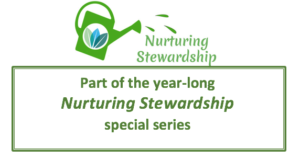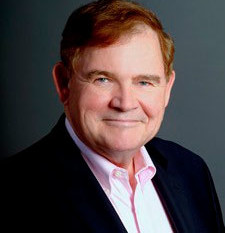 Can your members hear your stewardship message? Let’s improve the odds for communication success.
Can your members hear your stewardship message? Let’s improve the odds for communication success.

Not too long ago, an actor became something of an icon in American culture, as he travelled all over the country asking, “Can You Hear Me Now?” on behalf of a phone company (Now he is back again asking about the same questions for a different company, but that is another story.)
Sometimes we have that same feeling among our stewardship teams: Hello? Anyone out there? Can you hear me? DID you hear me?
It would be difficult to overstate the importance of good communications. Without that, all our good work in stewardship results in little or no impact, so let’s get communications right.
This starts with recognizing that communications are not byproducts or just a tool – this is a core function of any group that hopes to work together and accomplish something. Treat communications as the foundational element it is, and you are on your way to success.
The number seven is considered lucky in many cultures, so let’s roll the dice and call up seven tips for better communications.
A Checklist for First Rate Communications
- Know Your Communicators: Everyone is interested in and has some role in communications, but you will find communications consistently are better if someone on your team has that area as a primary responsibility. 1-2 people should be thinking about and carrying out good communications practices all year round on any stewardship activity that could benefit from good communications.This means someone is thinking ahead on the calendar, can write well and succinctly, has some level of comfort with photos and graphics, is an agreeable but effective editor, and will take the initiative to get information from others needed to tell your story.
- Connect with Your Congregation’s Communication Team: There should be a team or at least an individual responsible for communications writ large in your congregation, both internal and external communications. If not, the odds are high that communications are a problem in the congregation more often than anyone would like. Communications are not just an afterthought – this is the connective tissue of congregational life and tying all the components together (enews, bulletins, newsletters, announcements, podcasts, media and community engagement – it all connects.).On the hopeful assumption that your congregation does have a Communications Team, ensure the Stewardship Team is linked to them. Know their deadlines and format requests; feed them information in a timely and polished manner so they can help tell your story, too.
- Build Communications Matrices: A good way to ensure you are communicating effectively is to list out your audiences (who do you want to reach? Certain groups in the congregation, local neighbors, etc.?). Then list all the communication tools at your disposal (enews, posters in the Commons, email, social media, etc.)If you do this in a matrix, you could have the audience listed on one axis and the tools on the other axis. Then just check off which tools you expect to work best with which group. In this way, Now you have a focused plan matching people with communications outlets and you are less likely to overlook someone or some outlet.
- Connect Stewardship Themes with Worship Themes: Both stewardship and worship suffer when they are separated in the mind of members. Know the theme of the month, sermon topics, etc. when laying out your stewardship communications and make that linkage. For example, if last Sunday’s sermon really resonated with people, your next communication might take up the theme/title, and start out in this manner:“Last Sunday Rev. Smith reminded us in a powerful sermon that….. This applies to our stewardship as members of this congregation as well….”
- Effective Timelines for Communications: Timing is crucial for stewardship communications. The goal is to get information and reflection out in time for people to absorb what is being shared, but if the communication calls for a specific action at a specific time, we don’t want the message to come out so early that people forget about it when the time comes to act.Communications experts tell us that the most effective messaging usually involves sending out your message three times, in three different ways, all timed appropriately. Plan your communications out far enough ahead on the calendar so that your message arrives polished and at just the right times.
- Work with Local Media: This is best done through your congregation’s communications team, which should already have a working relationship with local media outlets. Many local and neighborhood publications and local radio stations are interested in good human interest or topical stories. If your congregation builds a reputation for bringing in crisp, well written narratives, accompanied by good photos where applicable, your stories are much more likely to be told.
What sort of stewardship story might get picked up? You have more such stories than you might have realized. Does your congregation share the collection plate with other good causes? That is a good story to tell, especially if you share every Sunday. Why your congregation does this and how you choose with whom to share are good stories, and are likely to bring visitors to come see you and learn more about your values and sense of community.Perhaps you have an upcoming sermon that might make an interesting story that will attract interest. I recently worked with a congregation in which the minister gave the following sermon on the kickoff Sunday for their annual stewardship campaign: “Five Reasons Why You Should Not Make a Pledge.” That title sparked a lot of interest and guessing about what was going to be said, and it led to thoughtful discussions during the coffee hour. A visitor would have been impressed with what they heard.
- Testimonials are Vital: We have talked before about the power and importance of testimonials (see our blog, The Power of Testimonials – and the Risk . As we noted in that earlier blog, testimonials are a cornerstone of stewardship and of community, but they require some effort to be done well. Someone needs to have this area as a portfolio to manage, working careful on selection of testimonials, good delivery, method of delivery and reproduction (live, print, video, etc.). These are also excellent things to reproduce and share on your web site so potential visitors can hear first-hand what it feels like to be a part of your congregation.
And a Bonus Tip: Your stewardship campaigns likely – hopefully – employ several communications elements: a letter from the leadership and/or from the minister, a case statement, a commitment (pledge) form, and likely several other pieces. You might find it illuminating, occasionally, to circulate among your readers at the end of the campaign a short survey along the following lines:
During the just completed stewardship campaign, we shared several documents and presentations with you. We would be grateful if you could take about two minutes and complete the short survey below to let us know what you found useful for your reflection.
Then just list the items (pastoral letter, case study, etc) and have a 1-5 scale next to each for usability. Such a survey could be printed on note cards passed out on Sunday and collected with the offering, and/or done on line, via Survey Monkey or any other such service you may choose.
Bill Clontz is a member of the Stewardship for Us Team, supporting the UUA.

Bill can be reached at bill@stewardshipforus.com, via UUA Congregational Life, (http://www.uua.org/finance/fundraising), or via your regional staff.
This blog has a new posting no less than once a month. You may find it and more at www.stewardshipforus.com. You are welcome to sign up for stewardship updates at the blog.
Comments and discussion are always welcome; share your experiences and ideas with us.

Stewardship Consultant Barry Finkelstein has been a Unitarian Universalist congregational stewardship consultant since the Fall of 2007 and has worked with over 50 congregations on annual budget drives, capital campaigns, and strategic planning. Reach Barry at Team@stewardshipforus.com
